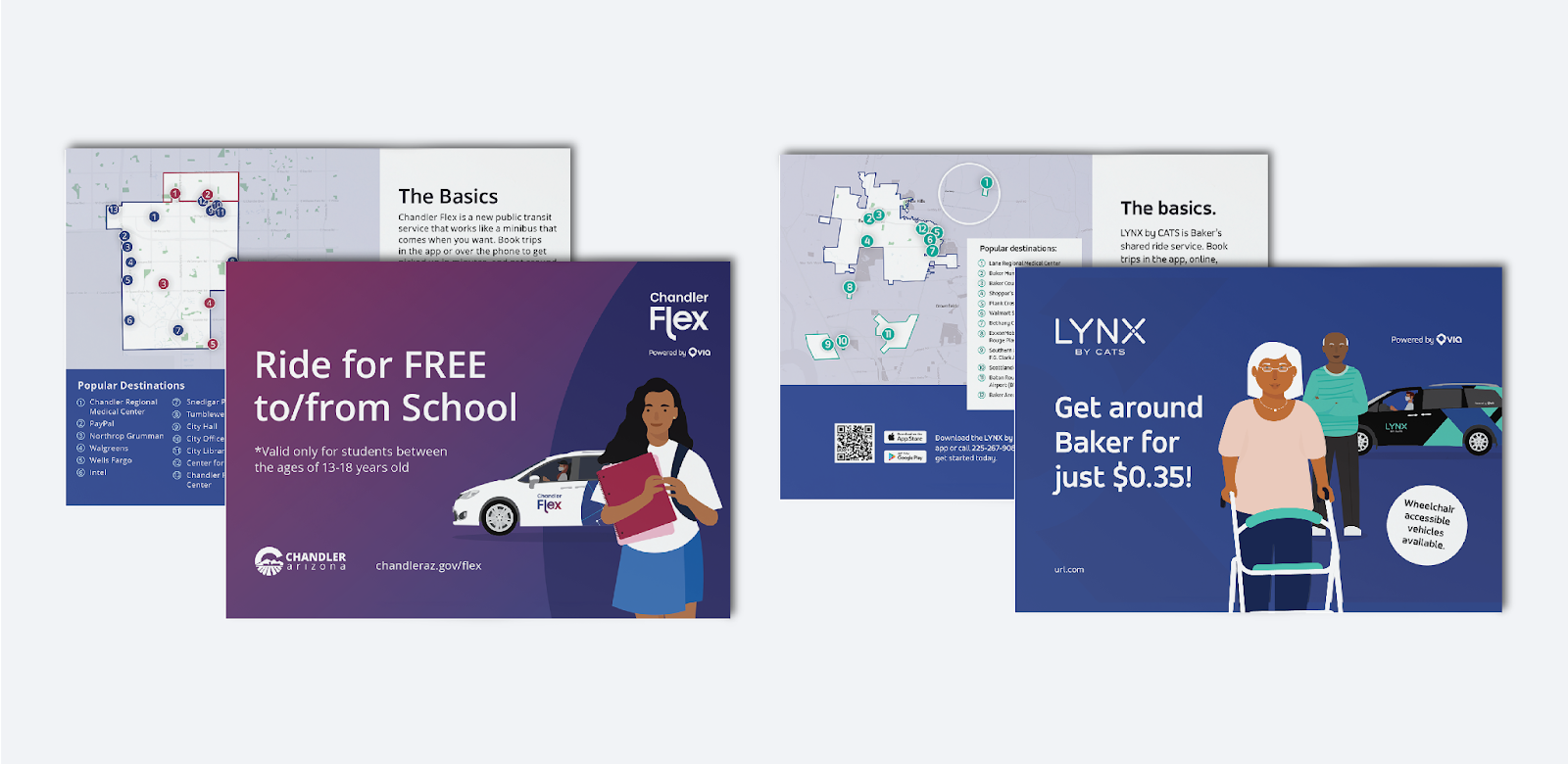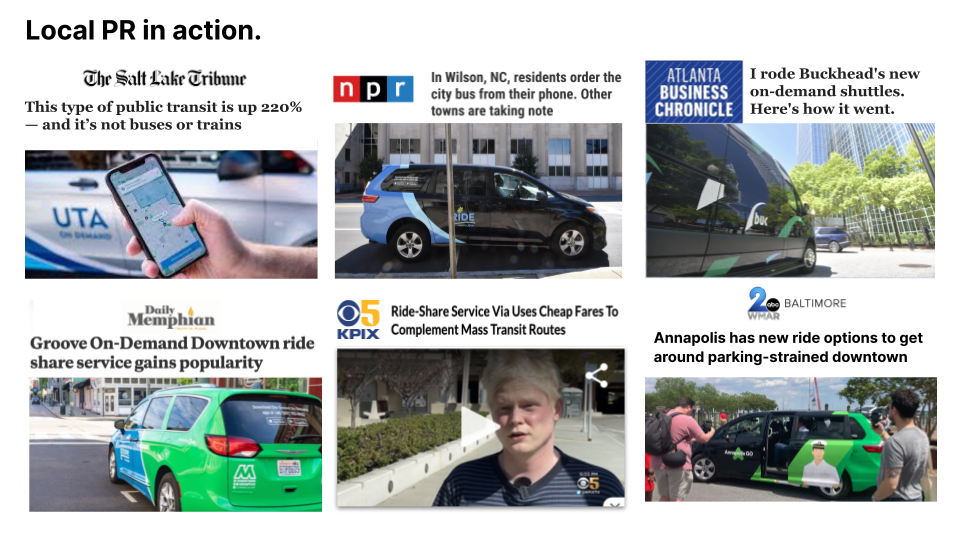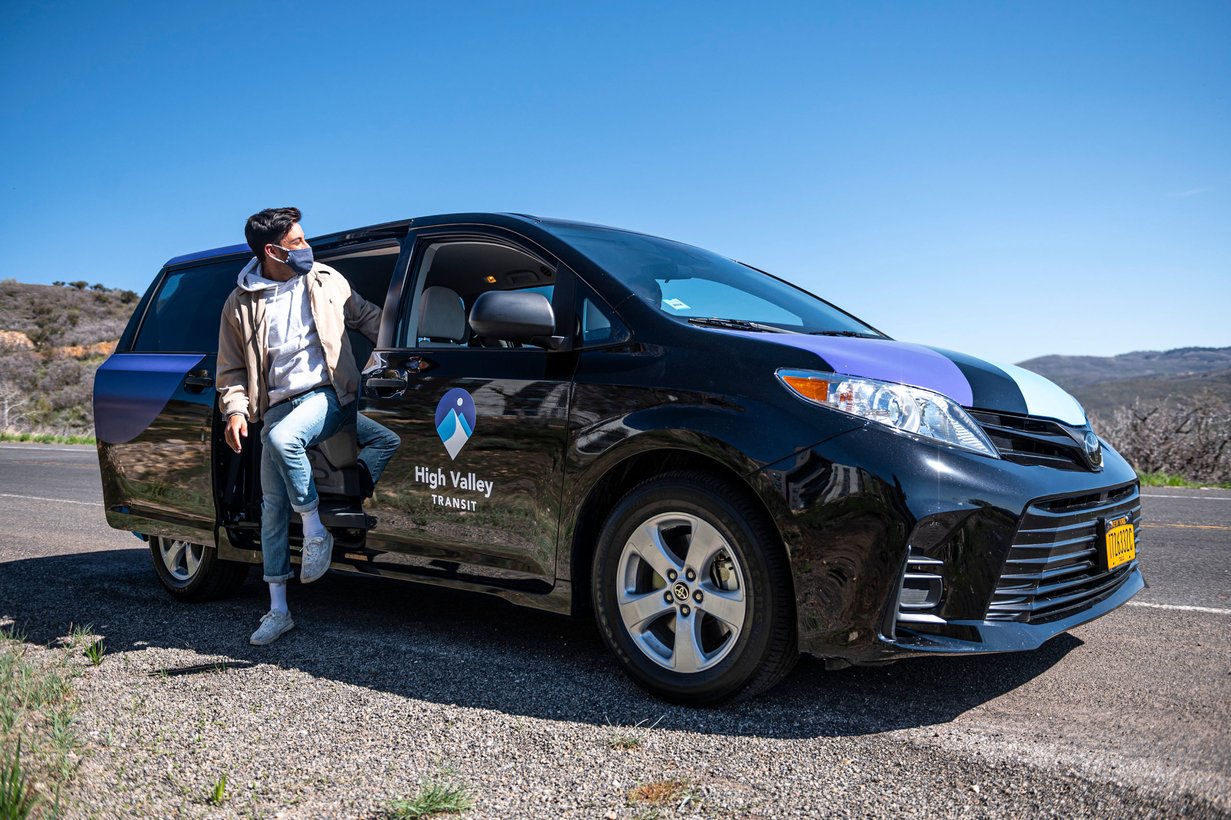- Getting the rest of your community on board.
- Getting people to take a first ride.
- Getting people to ride regularly.
We’re here to help. Via is the industry leader in end-to-end branding and marketing for on-demand transit services — our Rider Growth team has supported 200+ services and generated millions of rides, with experience in a range of rider audiences including commuters, seniors, students, paratransit riders, unbanked riders, and riders without access to a smartphone. This article outlines our tried-and-true best practices for growing microtransit ridership.
1. Build a brand.
Creating awareness of your new service starts with a coherent brand strategy. Your approach to this task will vary according to several factors:
- What, if any, agency branding already exists?
- What kinds of transit services are available in the area, and how are they branded?
- What primary use case is your new service going to meet?
- What is the relationship between the new service and existing transit?
Via has worked with partners in a variety of circumstances, from new agencies spinning up multiple services from scratch to agencies for which microtransit is just the latest entry into a complex ecosystem of transit options.
2. Know your rider.
Next up is building a marketing strategy that will cater to the needs of your unique community. This process requires a solid understanding of who your audience is and how they plan to use this service.
At Via, we always start by looking at the data available to us: in this case, the service zone, analyzed using a cross-tabulation of census data and other data layers available in Remix — the Via-owned mapping software used by transportation planners and cities worldwide — to begin understanding the area’s demographics. We also refer to past work we’ve done with similar audiences or use cases. We then further develop our strategy by compiling answers to key questions. Who do you anticipate to be your primary audience? What is the primary anticipated use case? What are your riders’ biggest transportation pain points?
Beyond the wider target, we look for smaller addressable segments that can be served by the microtransit service and identify that groups more specific needs. Two audiences we often market to are students and senior citizens. Students need affordable ways to get to and from campus and have a more native relationship to technology, while seniors need easy and accessible ways to get to and from appointments or errands and consume media differently.
3. Customize your channel strategy.
Once we know our audience(s), we can identify a marketing channel strategy. We typically use a combination of the following channels:
- Physical marketing
- Digital marketing
- High-touch community engagement
- Public relations

The audience and use case drive the specific channel allocation. In places where we’re marketing to less tech-savvy populations, we will deprioritize digital marketing and prioritize out-of-home touchpoints, like physical posters at community centers or transit stops, or even utility bill inserts. In places where we’re marketing to senior citizens or people who may be hesitant to change behavior, we will focus on community engagement — hosting events to help potential riders download and set up the app, for example — and tweak our creative to include larger fonts.
We also tweak our messaging to reflect the intended use case for the service. In some instances, we highlight riders’ ability to run errands and hit the town, whereas in others we zoom in on commuting benefits and easy connections to other forms of public transit.
How did you hear about this service?

Source: GoZone 2021 rider marketing survey
Yet the core components to our strategy don’t change. Beyond word-of-mouth, the top three ways people find out about us are typically paid social media, our branded vehicle wraps, and out-of-home advertising, so these will factor into our strategy no matter the market or the audience. Additionally, we know we always need a combination of materials that drive general excitement about the service and materials that provide information about how to use the service.

4. Leverage local expertise.
We can do all the demographic research in the world, but it won’t mean anything unless the people on the ground become outspoken advocates for the service. They’re the ones who will ensure we’re using the correct local terminology (Indy vs. Indianapolis) and fill us in on any on-the-ground specificities (specific locations that are optimal for out-of-home placements, for instance).
Even more crucially, locals know best how to generate excitement and show how the service fulfills critical needs. This is where community engagement and PR come in. Riders are more likely to try a new transit service if they hear about it from the voices they already trust. To that effect, we always connect with local organizations, encouraging them to share info about the service directly with their communities, and we generate hype in local news outlets.

5. Provide ongoing support.
Your microtransit service has launched and ridership is increasing by the day — now what? The work doesn’t stop there. One person may have downloaded the app but not yet taken a ride. Another may have heard about the service in passing but then forgot about it. Yet another may now be a loyal rider but hasn’t told their friends and family about the service. Or they’re riding once a day when they could be riding 2+ times.
There are always more riders to attract and rides to generate. Ensure you put a plan together both for growing ridership and increasing rider loyalty. From our experience, the strategy will contain a mix of the following:
- Paid search and social
- Continued outreach to community groups or establishments
- Lifecycle messaging
- Referral programs
- Passes and subscriptions
- Surveys




